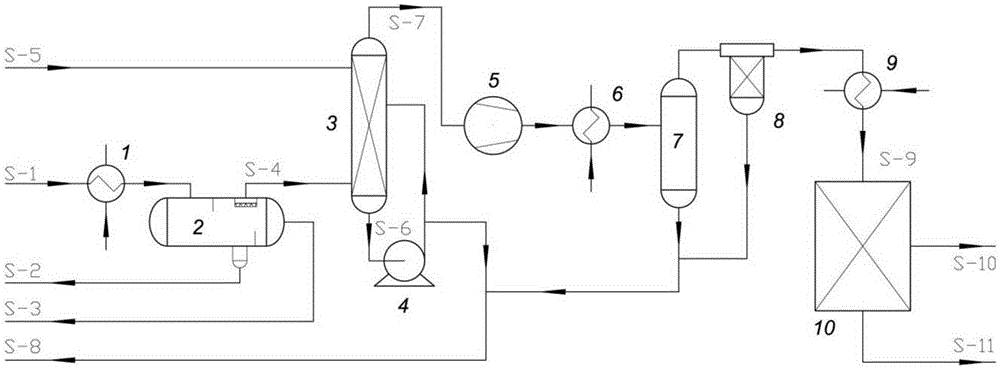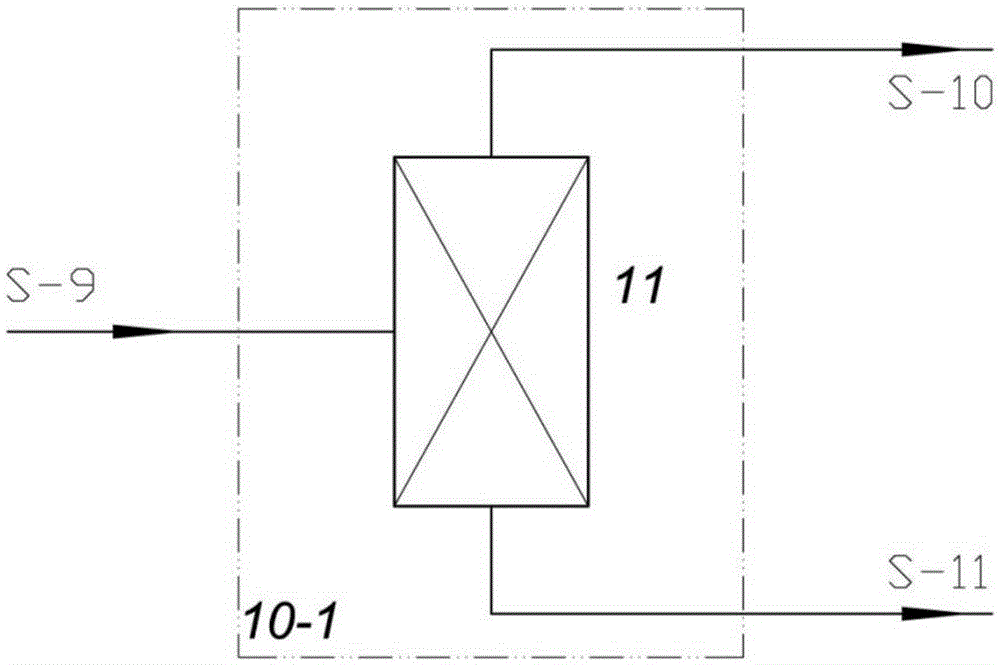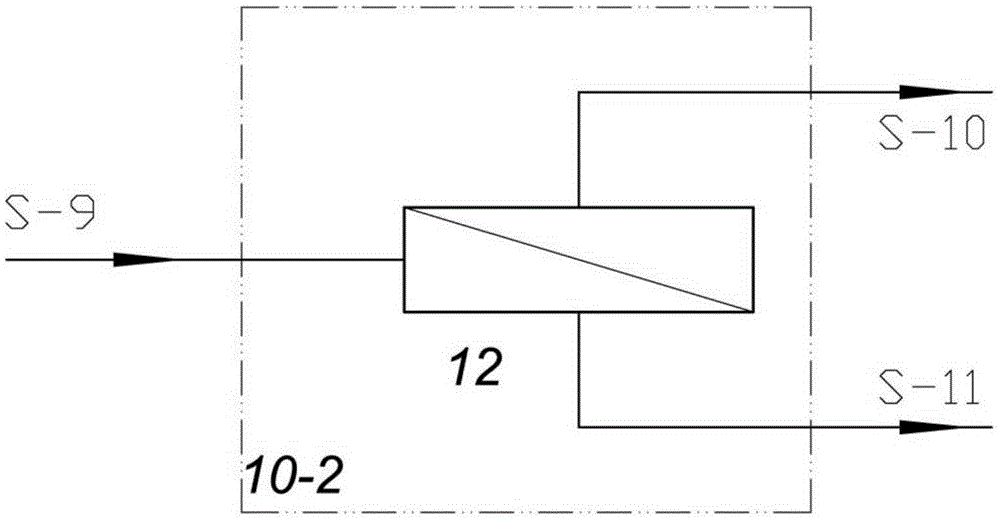Method for removing styrene from ethylbenzene dehydrogenation tail gas and recovering hydrogen
A technology of ethylbenzene dehydrogenation and ethylbenzene catalytic dehydrogenation, applied in the field of petrochemical industry, can solve the problems of reducing gas permeation rate, unfavorable adsorbent regeneration, affecting the lubrication of rotating parts, etc., achieving separation efficiency and equipment service life guarantee, The effect of reducing the service life and separation efficiency and ensuring safe and stable operation
- Summary
- Abstract
- Description
- Claims
- Application Information
AI Technical Summary
Problems solved by technology
Method used
Image
Examples
Embodiment 1
[0031] Example 1 For the ethylbenzene dehydrogenation tail gas produced in a 100,000-ton / year styrene production device, the method for deep removal of styrene of the present invention is used for pretreatment and compression, and then a pressure swing adsorption separation device is used to separate and purify hydrogen. Such as figure 1 As shown, the ethylbenzene dehydrogenation tail gas S-1 (3406Nm3 / h, 0.02MPag, 40°) produced by the styrene production unit is input into the first heat exchanger 1 and cooled to 20°C, and then enters the three-phase separation tank 2 Among them, the condensed water S-2 and the crude styrene S-3 are extracted from the bottom and the middle of the three-phase separation tank 2 respectively, and the uncondensed ethylbenzene dehydrogenation tail gas S-4 is extracted from the top of the three-phase separation tank 2 It enters from the bottom of the circulation absorption tower 3, and contacts with the ethylbenzene S-5 (2.5t / h, 20°C) input from the ...
Embodiment 2
[0036] Example 2 For the ethylbenzene dehydrogenation tail gas produced in a 100,000-ton / year styrene production device, the method for deep removal of styrene of the present invention is used for pretreatment and compression, and then a hydrogen membrane separation device is used to separate and purify hydrogen.
[0037] Such as figure 1 As shown, the ethylbenzene dehydrogenation tail gas S-1 (3406Nm3 / h, 0.02MPag, 40°) produced by the styrene production unit is input into the first heat exchanger 1 and cooled to 20°C, and then enters the three-phase separation tank 2 Among them, the condensed water S-2 and the crude styrene S-3 are extracted from the bottom and the middle of the three-phase separation tank 2 respectively, and the uncondensed ethylbenzene dehydrogenation tail gas S-4 is extracted from the top of the three-phase separation tank 2 It enters from the bottom of the circulation absorption tower 3, contacts with ethylbenzene S-5 (4.0t / h, 20°C) input from the top of ...
Embodiment 3
[0042] Example 3 For the ethylbenzene dehydrogenation tail gas produced by a 100,000-ton / year styrene production device, the method for deep removal of styrene of the present invention is used for pretreatment and compression, and then separated and purified by a pressure swing adsorption coupling hydrogen membrane separation device hydrogen.
[0043] Such as figure 1 As shown, the ethylbenzene dehydrogenation tail gas S-1 (3406Nm3 / h, 0.02MPag, 40°) produced by the styrene production unit is input into the first heat exchanger 1 and cooled to 20°C, and then enters the three-phase separation tank 2 Among them, the condensed water S-2 and the crude styrene S-3 are extracted from the bottom and the middle of the three-phase separation tank 2 respectively, and the uncondensed ethylbenzene dehydrogenation tail gas S-4 is extracted from the top of the three-phase separation tank 2 It enters from the bottom of the circulation absorption tower 3, contacts with ethylbenzene S-5 (4.0t / ...
PUM
| Property | Measurement | Unit |
|---|---|---|
| recovery rate | aaaaa | aaaaa |
| recovery rate | aaaaa | aaaaa |
Abstract
Description
Claims
Application Information
 Login to View More
Login to View More - R&D
- Intellectual Property
- Life Sciences
- Materials
- Tech Scout
- Unparalleled Data Quality
- Higher Quality Content
- 60% Fewer Hallucinations
Browse by: Latest US Patents, China's latest patents, Technical Efficacy Thesaurus, Application Domain, Technology Topic, Popular Technical Reports.
© 2025 PatSnap. All rights reserved.Legal|Privacy policy|Modern Slavery Act Transparency Statement|Sitemap|About US| Contact US: help@patsnap.com



